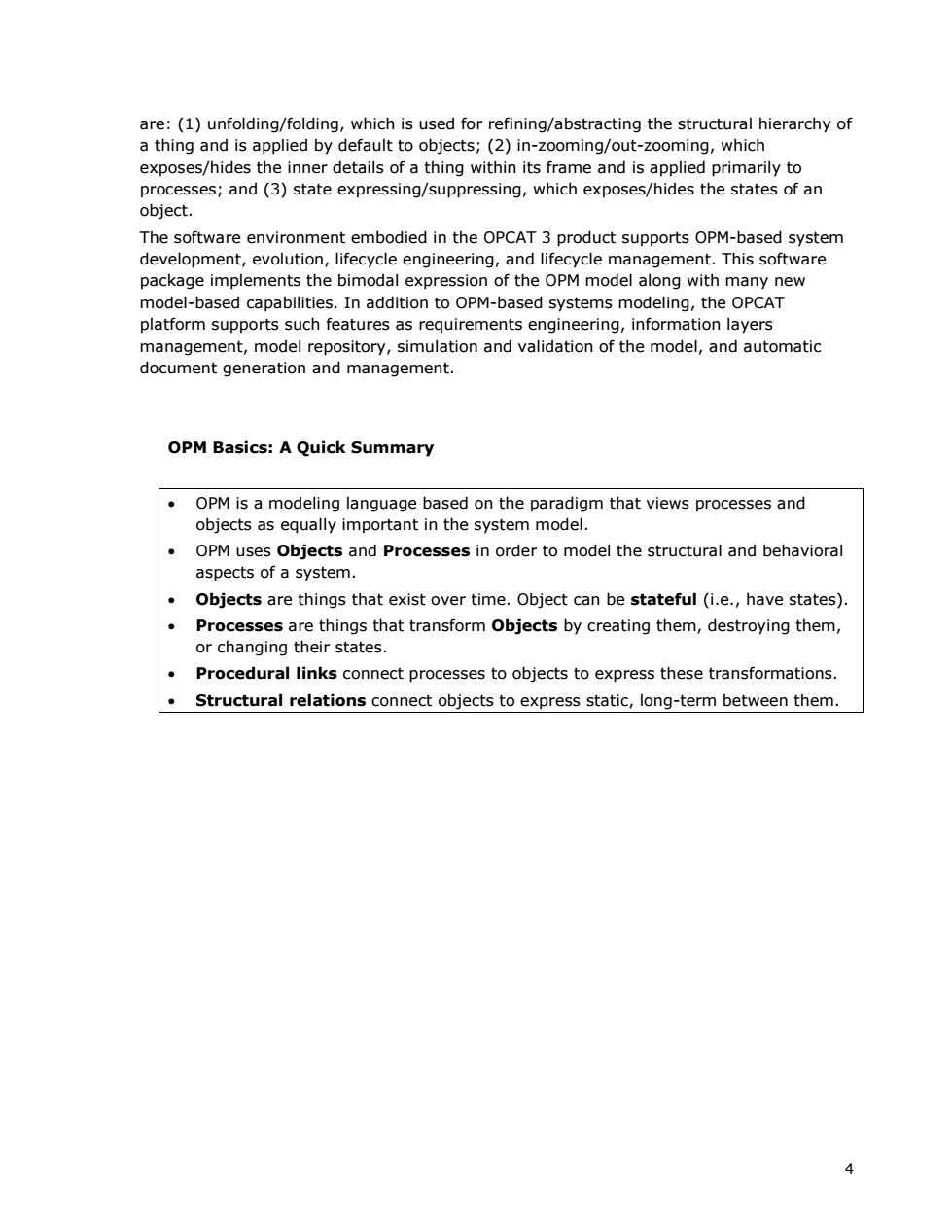正在加载图片...

are:(1)unfolding/folding,which is used for refining/abstracting the structural hierarchy of a thing and is applied by default to objects;(2)in-zooming/out-zooming,which exposes/hides the inner details of a thing within its frame and is applied primarily to processes;and(3)state expressing/suppressing,which exposes/hides the states of an object. The software environment embodied in the OPCAT 3 product supports OPM-based system development,evolution,lifecycle engineering,and lifecycle management.This software package implements the bimodal expression of the OPM model along with many new model-based capabilities.In addition to OPM-based systems modeling,the OPCAT platform supports such features as requirements engineering,information layers management,model repository,simulation and validation of the model,and automatic document generation and management. OPM Basics:A Quick Summary ● OPM is a modeling language based on the paradigm that views processes and objects as equally important in the system model. OPM uses Objects and Processes in order to model the structural and behavioral aspects of a system. ● Objects are things that exist over time.Object can be stateful(i.e.,have states). Processes are things that transform Objects by creating them,destroying them, or changing their states. Procedural links connect processes to objects to express these transformations. Structural relations connect objects to express static,long-term between them. 44 are: (1) unfolding/folding, which is used for refining/abstracting the structural hierarchy of a thing and is applied by default to objects; (2) in-zooming/out-zooming, which exposes/hides the inner details of a thing within its frame and is applied primarily to processes; and (3) state expressing/suppressing, which exposes/hides the states of an object. The software environment embodied in the OPCAT 3 product supports OPM-based system development, evolution, lifecycle engineering, and lifecycle management. This software package implements the bimodal expression of the OPM model along with many new model-based capabilities. In addition to OPM-based systems modeling, the OPCAT platform supports such features as requirements engineering, information layers management, model repository, simulation and validation of the model, and automatic document generation and management. OPM Basics: A Quick Summary • OPM is a modeling language based on the paradigm that views processes and objects as equally important in the system model. • OPM uses Objects and Processes in order to model the structural and behavioral aspects of a system. • Objects are things that exist over time. Object can be stateful (i.e., have states). • Processes are things that transform Objects by creating them, destroying them, or changing their states. • Procedural links connect processes to objects to express these transformations. • Structural relations connect objects to express static, long-term between them